The middle of the 20th Century was a golden age for road travel in the United States. Cars had become cheap and spacious enough to carry families comfortably for hundreds of miles. The Interstate Highway System had started to connect the country’s smaller roads in a vast nationwide network. Finally, tourists could make their way from New York to California, seeing the grandeur of America along the way. That freedom and mobility, however, was not equally available to everyone.

In 1956, the year that federal funding made the Interstate Highway System possible, Jim Crow was still the law of the land. In the South, racial segregation was enforced by law — and had been since shortly after Reconstruction. In many parts of the North, the codes were enforced in practice. This reality made cross-country trips complicated, and sometimes even perilous, for black travelers.
Some African-American tourists would drive all night instead of trying to find lodging in an unfamiliar and possibly dangerous town. They would pack picnics so they could avoid stopping at restaurants that might refuse to serve them. Some people would even carry portable toilets in the trunks of their cars, knowing there was a good chance they would be turned away from roadside restrooms.
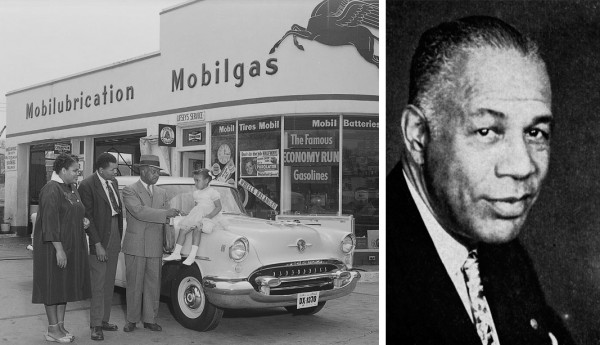
But in 1936, a man named Victor Hugo Green started a travel guide to make life on the road easier and safer for black motorists.
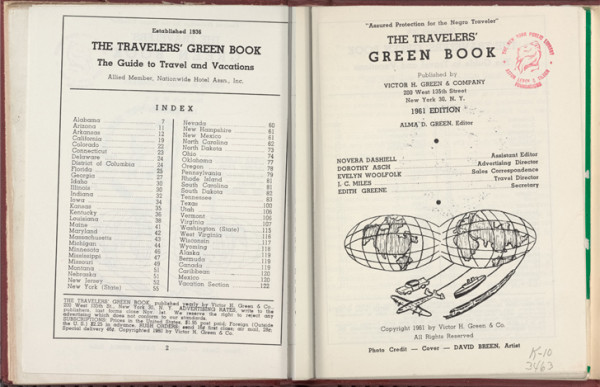
The guide listed, state by state, the restaurants, hotels, service stations, and other businesses that would welcome African-American travelers. Green called it “The Negro Motorist Green Book,” or “The Green Book,” for short.

Green did not have the most obvious background for starting a travel guide. He was not in the tourism industry, nor was he a writer; he was a mailman in Hackensack, New Jersey, who kept hearing stories about discrimination on the road. He was also not the first to come up with an idea of this kind. Jewish tourists, who also faced discrimination while traveling, had relied on similar guides to steer them away from hotels with a “Gentiles Only” policy.
In the Green Book’s early days, it wasn’t easy to compile listings from across the country, says playwright, author, and filmmaker Calvin Alexander Ramsey, who has researched the history of the guide. So Ramsey says Green tapped into a nationwide network of African-American letter carriers. These postal workers, familiar with their local communities, were ideally suited to help fill in the gaps from state to state.
As the Green Book caught on, businesses began to get in touch, asking to be listed. Black newspapers signed on as sponsors. The United States Travel Bureau helped spread the word about the guide. Eventually, Green retired from mail delivery to work full-time on the guide and to open a travel agency.
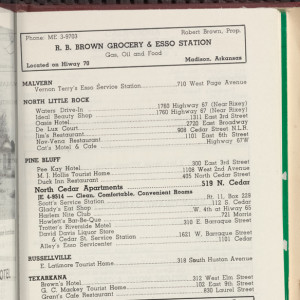
Distribution of the guide remained a challenge, says Ramsey, and Green relied on informal networks like the National Urban League, the NAACP, masonic lodges, and churches around the country.
There was also a big corporate sponsor that helped the guide expand its reach: Esso, also known as Standard Oil, and now known as ExxonMobil. The company may have supported the guide out of a sense of fairness and equality. John D. Rockefeller, who founded Standard Oil in 1870, had married into a family of abolitionists and voted for Abraham Lincoln. But there were certainly economic motivators as well. If African-American tourists felt comfortable on the road, they would travel more and buy more gas.
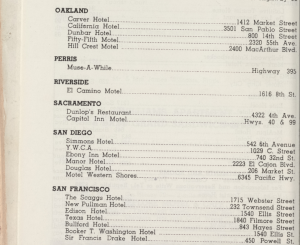
The Green Book would come to feature listings across all 50 states as well as locations in Canada, Mexico, and the Caribbean. About 15,000 copies were printed each year.
As the NAACP pushed for the 1964 Civil Rights Act, which outlawed racial discrimination, the black traveler became a key example in their argument to Congress. They appealed to that vision of the iconic family road trip, and the freedom to explore America by car. In his testimony before Senate in 1963, the NAACP’s Executive Secretary Roy Wilkins asked senators to imagine themselves as black travelers:
How far do you drive each day? Where and under what conditions can you and your family eat? Where can they use a restroom? Can you stop driving after a reasonable day behind the wheel, or must you drive until you reach a city where relatives or friends will accommodate you and yours for the night? Will your children be denied a soft drink or an ice cream cone because they are not white?
Framing the narrative of civil rights as a family travel narrative helped convince senators to vote for the bill. The last edition of the book was published in 1966.
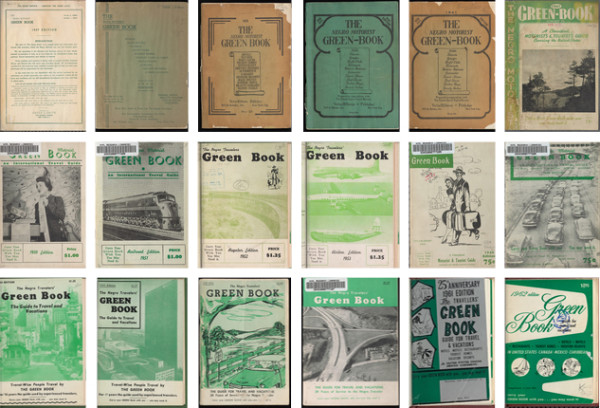
At the time of their publication, Green Books were relatively inexpensive and imminently practical, something bought to be used. Today, copies of the Green Book are scarce and valuable, collector’s items that, thankfully, are no longer needed to make travelers safe on the road. One recently sold at auction for over $20,000.



Comments (12)
Share
Nice piece. I remember first hearing about the Green Book on Backstory.
It’s ironic that Esso, now ExxonMobil, was so progressive about integration given that recently they have been regarded as one of the most homophobic major corporations (http://www.huffingtonpost.com/2013/10/16/anti-gay-companies_n_4110344.html).
The recently released book by Matt Ruff, Lovecraft Country, uses a fictionalized version of this story as a jumping-off point for his humorous, macabre fantasy.
I loved this episode. Such a great intersection of race, entrepreneurship, and freedom.
The New York City Public Library has digitized copies of the Green Book online: http://digitalcollections.nypl.org/collections/the-green-book#/?tab=about
They have also created a trip planner:
http://publicdomain.nypl.org/greenbook-map/
Great stuff! I actually saw the 1945 Green Book at the Ford Museum in Detroit. It was so small, elegant, and curious in its display case.
The link to share this post on Twitter doesn’t seem to be working.
Nice article and podcast! The National Association of Letter Carriers has worked for a number of years with Mr. Ramsey to help get the word out about Mr. Green. (Green was a member of NALC’s Hackensack Branch (local) 425, now known as Bergen County Merged Branch 425. NALC first wrote about Green in our monthly magazine, The Postal Record, in Sept. 2013, and in 2014, we awarded Green our first-ever Legacy Award as part of our annual ceremony recognizing letter carrier heroism.
Here is a link to the Sept. 2013 story:
http://old.nalc.org/news/precord/ArticlesPDF/09-2013/09-2013_green-book.pdf
And here is a link to a story about the Legacy Award:
https://www.nalc.org/community-service/body/2014-legacy.pdf
The last sentence Roman said in this one was too perfect. I started crying right there in my car. Great episode!
Just wanted to be sure you see today’s (17 May 2016) Los Angeles Times front page — there’s a story about the Green Book.
Though knew of Green Book appreciated the history of its creator. Saw one recently when speaker from Oregon Black Pioneers showed it to audience in talking about limitations for black families traveling in U.S.
Interesting how history repeats. In response to #travelingwhileblack, some have launched a new startup. There’s still a market for the ‘greenbook’.
http://www.forbes.com/sites/jordanlebeau/2016/06/10/after-airbnbwhileblack-two-startups-with-the-same-name-look-to-capitalize/#1832bf024887
Noirbnb.com
I’m sure most Afro Americans have experienced many horrible incidents in traveling throughout the United States. I will never forget the problems that I encountered in Saint Louis,Missouri in 1956 and in Chattanooga,Tennessee in 1971. I was not aware of the Green Book at the time but I’m positive it would have saved me from the racists white folks bigotry that existed in America against people of color.yesterday,today and tomorrow. Bill Boulware.
This is poignant with recent events and a great reminder that this is all living memory. People are Alice who went through segregation. Interesting that the covers on the early ones appear to show white people…